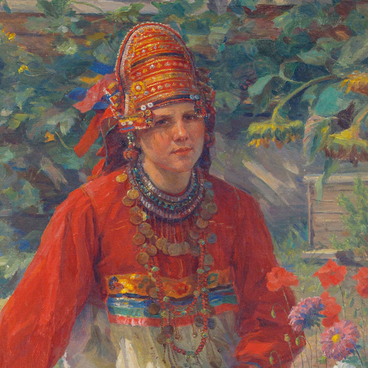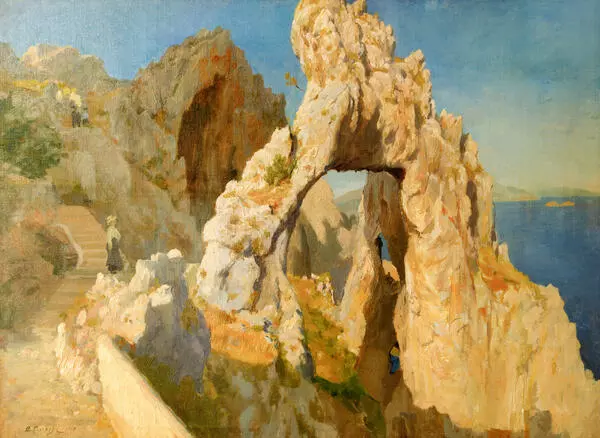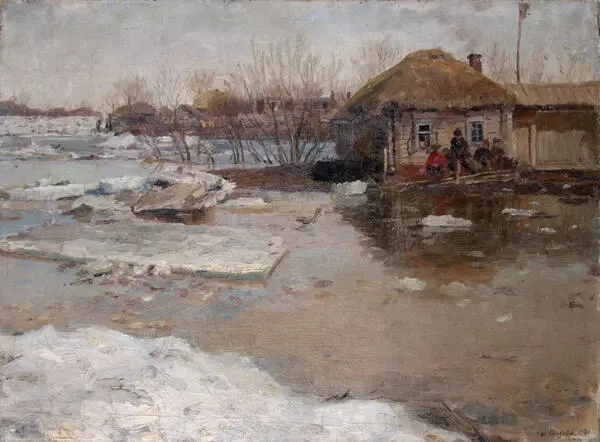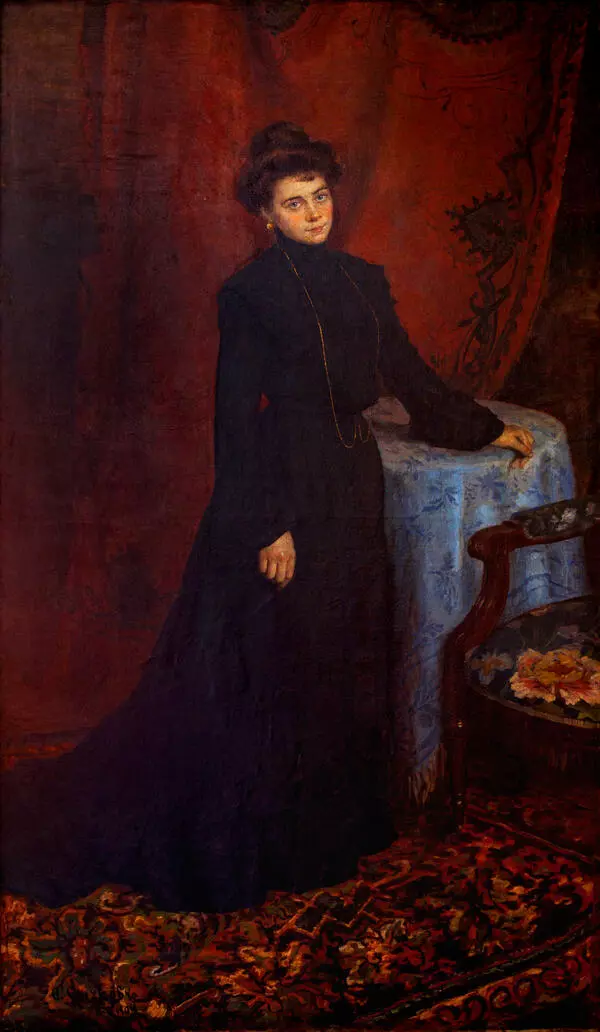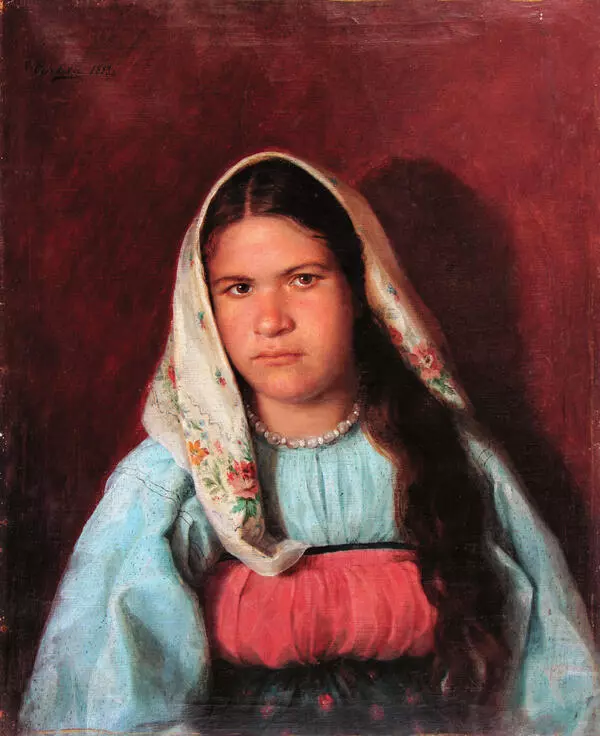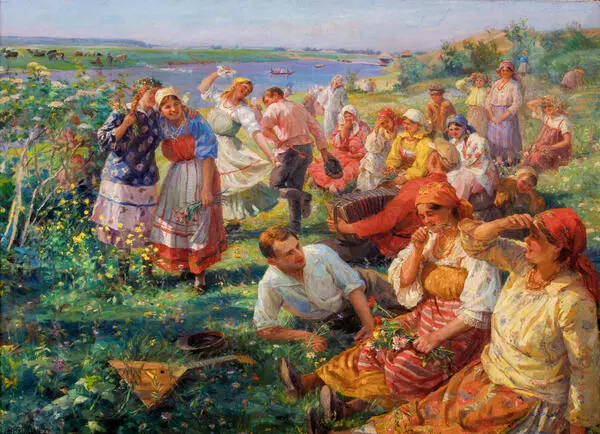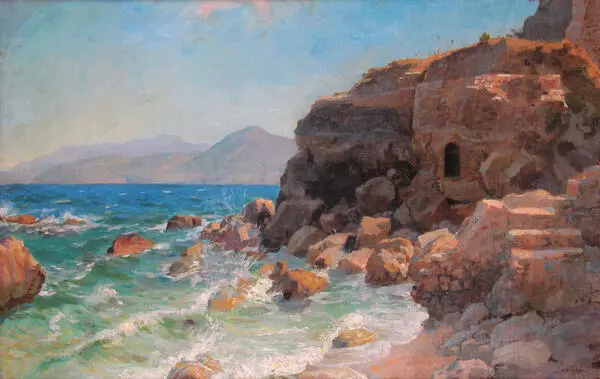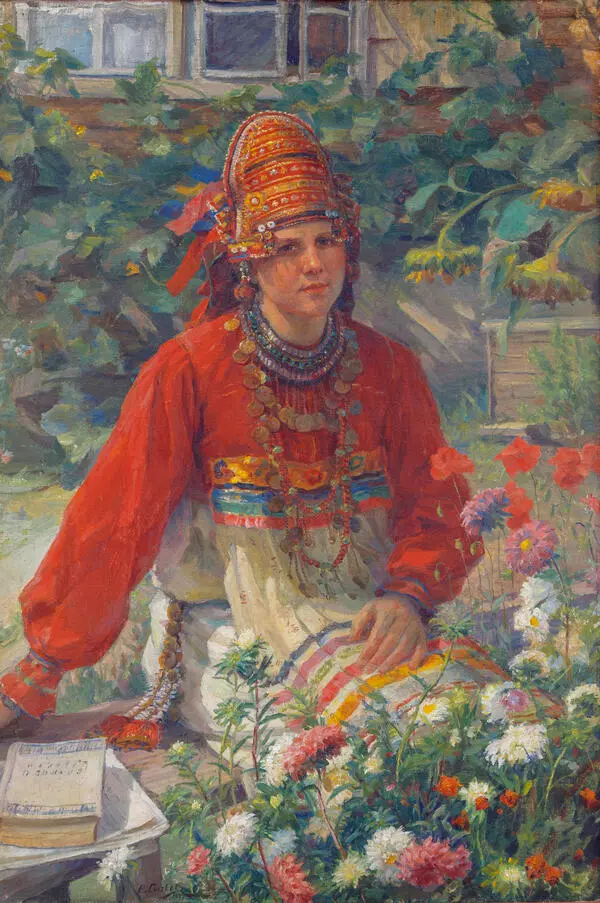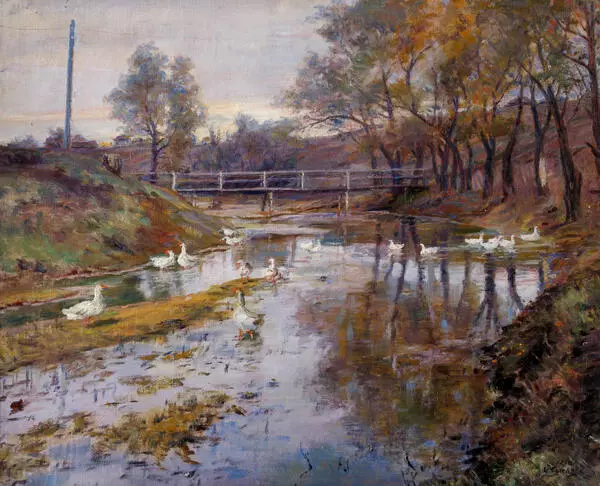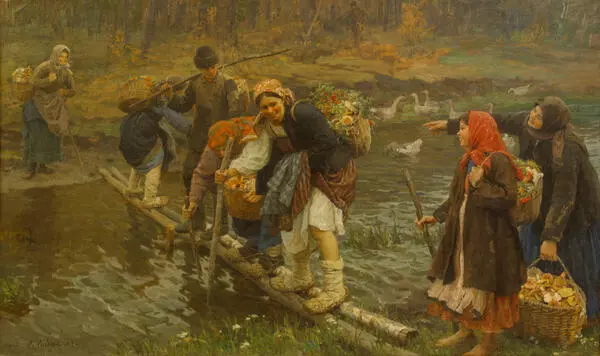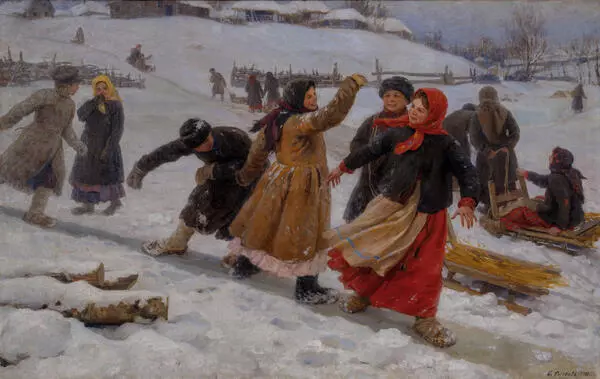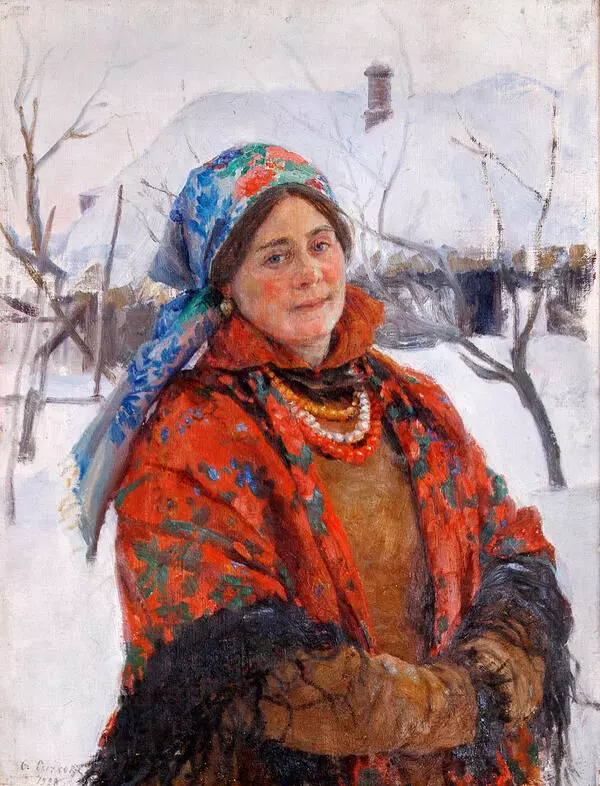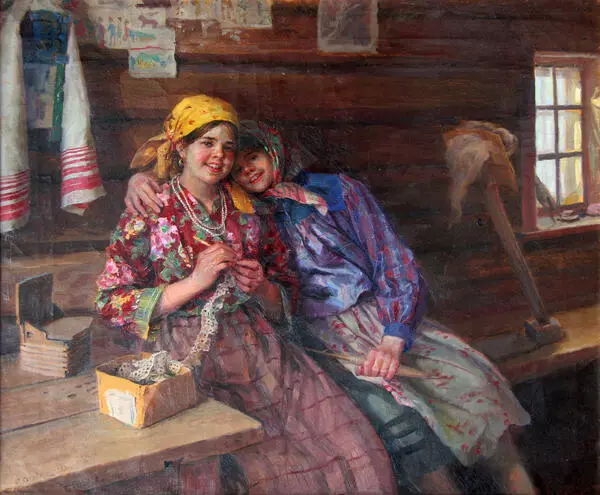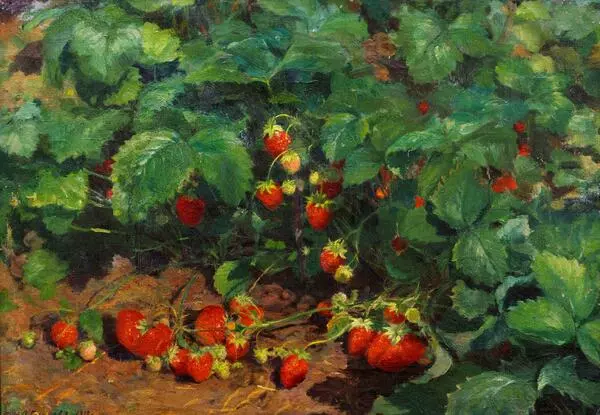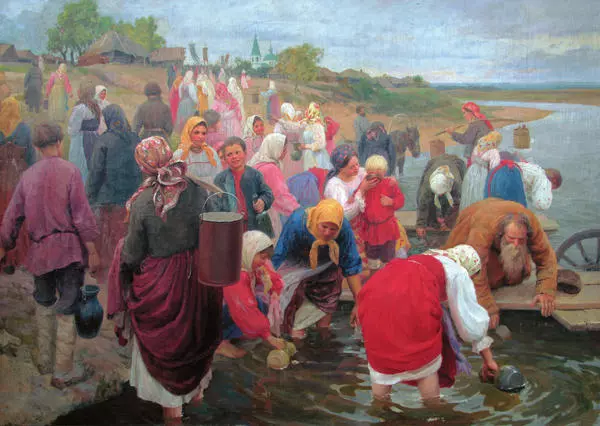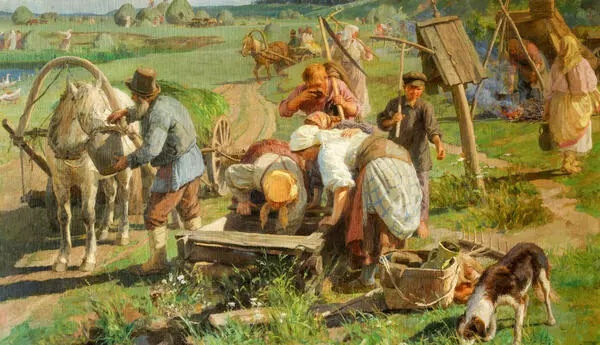Fedot Sychkov created the painting ‘Rome. The Colosseum’ in 1908, during his trip abroad. He brought many paintings from Italy and France, including seascapes, architectural landscapes of Rome, Venice, Naples, and Mentone. The introduction to the monuments of Western European art became a powerful impulse for his later artworks: he started to use a lighter color scheme and his painting style became freer.
His bright works of this period reflected the enthusiastic mood of the artist who grew up in a poor peasant family in the deepest countryside and was in awe of Italy. Sychkov’s young wife, Lidia, also shared this admiration. She even helped him create his Italian sketches and paintings, playing the role of a staffage figure for his artworks. One can notice a lady in a straw hat (or with an umbrella) not only in the background of the Colosseum but also among the ruins of Pompeii, as well as on the island of Capri.
The majestic, strict, and harmonious appearance of the Colosseum attracted the attention of many Russian artists: Fyodor Matveyev, Sylvester Shchedrin, Nikanor Chernetsov, Vasily Surikov. Depicting “his” bright and sunny Colosseum, Sychkov conveyed the admiration he felt for the monuments of the Eternal City. He depicted the structure against the background of a high blue sky with small clouds. In the center of the painting, two figures stand in front of the Colosseum; a woman under a dark umbrella and a smaller male figure. In the foreground to the left, a sitting girl enlivens the landscape. She is dressed in a long terracotta-colored skirt, a white blouse, and a wide-brimmed hat. Apparently, Lidia posed for her husband.
The Colosseum in Rome became the most famous miracle of its time. The building struck visitors not only with its grandiose size but also with its unusual technical equipment. Massive elevators, driven by dozens of slaves, operated in the Colosseum. The slaves delivered the audience members to the first and second tiers. Mobile platforms lifted gladiators and those who were sentenced to death from the basements. Specialized catapults threw wild animals into the arena. The thunder of applause and the roar of enthusiastic crowds were an indispensable part of the life of the Empire’s capital for three centuries.
In the Middle Ages, the building began to deteriorate. The Colosseum became a source of building materials for citizens for several centuries. In the 14th century, an earthquake brought down one of the walls. During the Renaissance, an enormous cross was placed in the center of the dilapidated arena. Since then, the Colosseum was turned into a monument to all the persecuted Christians. Another earthquake occurred in 1803, which made visits to the monument unsafe. Then the restoration, strengthening, and conservation of the once greatest structure began. The ancients said:
His bright works of this period reflected the enthusiastic mood of the artist who grew up in a poor peasant family in the deepest countryside and was in awe of Italy. Sychkov’s young wife, Lidia, also shared this admiration. She even helped him create his Italian sketches and paintings, playing the role of a staffage figure for his artworks. One can notice a lady in a straw hat (or with an umbrella) not only in the background of the Colosseum but also among the ruins of Pompeii, as well as on the island of Capri.
The majestic, strict, and harmonious appearance of the Colosseum attracted the attention of many Russian artists: Fyodor Matveyev, Sylvester Shchedrin, Nikanor Chernetsov, Vasily Surikov. Depicting “his” bright and sunny Colosseum, Sychkov conveyed the admiration he felt for the monuments of the Eternal City. He depicted the structure against the background of a high blue sky with small clouds. In the center of the painting, two figures stand in front of the Colosseum; a woman under a dark umbrella and a smaller male figure. In the foreground to the left, a sitting girl enlivens the landscape. She is dressed in a long terracotta-colored skirt, a white blouse, and a wide-brimmed hat. Apparently, Lidia posed for her husband.
The Colosseum in Rome became the most famous miracle of its time. The building struck visitors not only with its grandiose size but also with its unusual technical equipment. Massive elevators, driven by dozens of slaves, operated in the Colosseum. The slaves delivered the audience members to the first and second tiers. Mobile platforms lifted gladiators and those who were sentenced to death from the basements. Specialized catapults threw wild animals into the arena. The thunder of applause and the roar of enthusiastic crowds were an indispensable part of the life of the Empire’s capital for three centuries.
In the Middle Ages, the building began to deteriorate. The Colosseum became a source of building materials for citizens for several centuries. In the 14th century, an earthquake brought down one of the walls. During the Renaissance, an enormous cross was placed in the center of the dilapidated arena. Since then, the Colosseum was turned into a monument to all the persecuted Christians. Another earthquake occurred in 1803, which made visits to the monument unsafe. Then the restoration, strengthening, and conservation of the once greatest structure began. The ancients said:


